The last in my series of posts from Israel:
After leaving the Valley of Tears battle monument, we descended from the Golan Heights towards Israel’s northernmost town, Metula.
But along the way, we stopped at the Druze town of Mas’ade for lunch at the Nedal Restaurant. Here’s the view towards Mount Hermon (lost then recaptured during the 1973 Yom Kippur War) from in front of the restaurant:
You can see on this map how far north Metula is:
These map view give a good perspective on how Metula is surrounded on three sides by Lebanon:
We were able to see the border fence from just about all vantage points. In this photo, the yellow gate is not the border fence, but controls access to some fields Israeli farmers use. The actual fence is just beyond:
Here you can see a just-slightly zoomed image from the same locate looking just to the right, with the Lebanese, Palestinian and Hezbollah flags and a large billboard featuring an unkown person, with newly constructed Hezbollah earthen berms at the top of the hill. Hadar Sela, our “guide,” was able to capture the images better than I could:
Because of the history of Hezbollah kidnappings and shootings along the border, and because the border surrounds Metula on three sides, it’s not uncommon to run into signs like this, declaring the area a closed military zone:
When we drove to the Mitzpe Benia lookout point at Kibbutz Misgav Am just south of Metula. The area is heavily patrolled, and we were visited by Israeli soldiers in armored vehicles as we were returning to our car.
The Lebanese village of Aadaisse (various other spellings) to the left was the scene in 2010 of the sniper attack by the Lebanese Army on Israeli observers watching the removal of trees beyond the border fence but within the U.N. certified blue line delineating Israeli territory. One Israeli officer was killed.
Hadar asked if I noticed anything unusual about this border area of Aadaisse. I looked, but didn’t notice anything.
Then she pointed out that there were no windows on the houses and no sign of life (other than a single car we saw drive through at one point).
It has been suggested that this is a fake village (or at least, section of a village) constructed by Hezbollah right up to the border. If and when another conflict breaks out, the supposed village will provide Hezbollah not only with firing positions, but many good photo-ops for a gullible media — look, the Zionist entity drove the people out and blew out all the windows!
This would be consistent with what Hezbollah is doing throughout Southern Lebanon, turning villages and civilian homes into weapons depots and firing positions.
Afterwards we headed back up to the Golan Heights and visited an excavated third or fourth century synagogue near the former Syrian village of Umm el Kanatir. The site is being reconstructed with original stones, which were electronically tagged during the excavation. The site was just recently opened to the public, and is one of dozens of ancient synagogues found in the Golan Heights.
A fitting end to our trip to the Golan, and our trip to Israel.
The full series of posts from my trip to Israel:
- Metula and the fake Hezbollah village
- On the Golan Heights – The Valley of Tears
- On the Golan Heights – The Battle of Tel Saki
- On the road to Golan
- And then there were none (of the pre-Oslo Arab killers of Israelis left in prison)
- To Samaria and back
- A stone’s throw away from trouble in Jerusalem
- What explains Americans’ strong support for Israel?
- Trying to explain the Tea Party in Israel
- This Night In Jerusalem
- Good morning, Tel Aviv
 DONATE
DONATE
Donations tax deductible
to the full extent allowed by law.

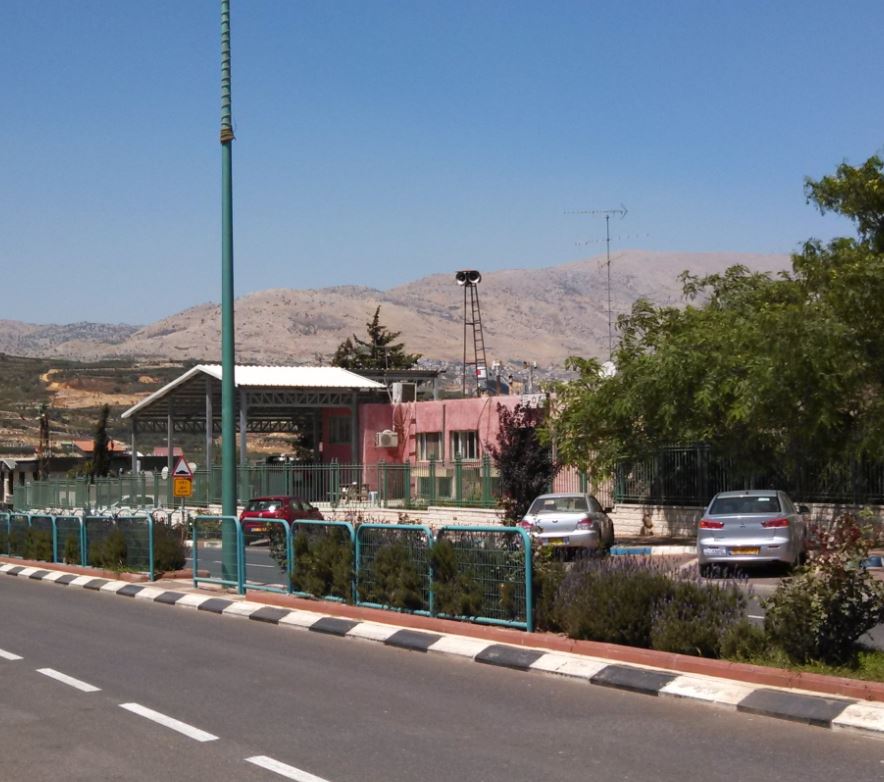

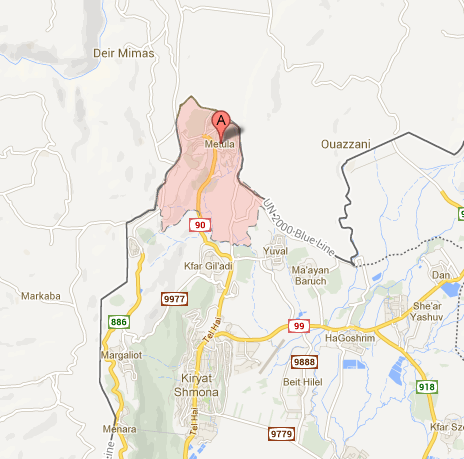
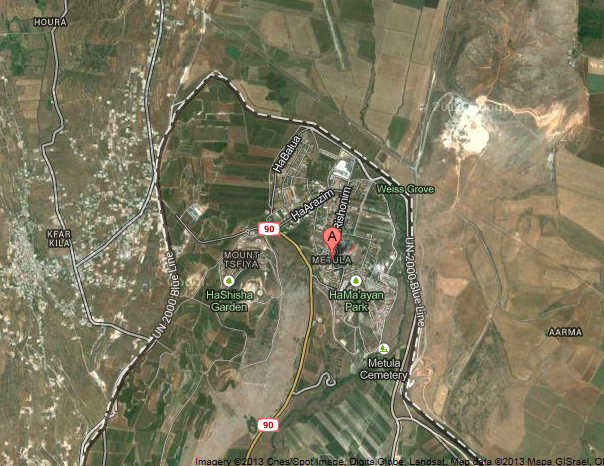
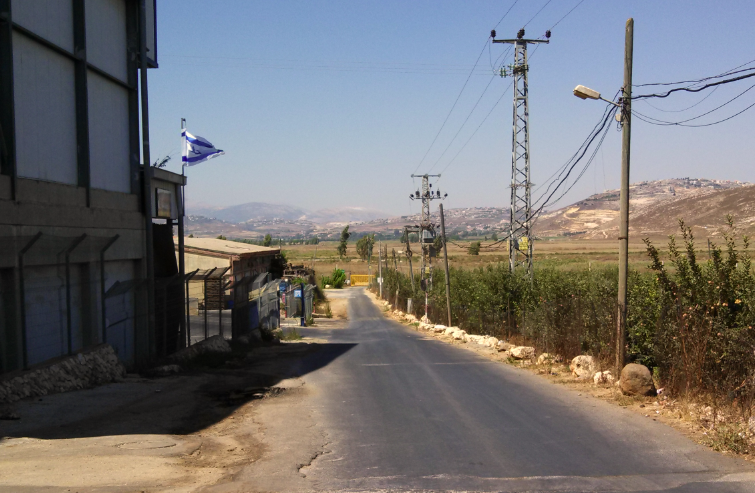
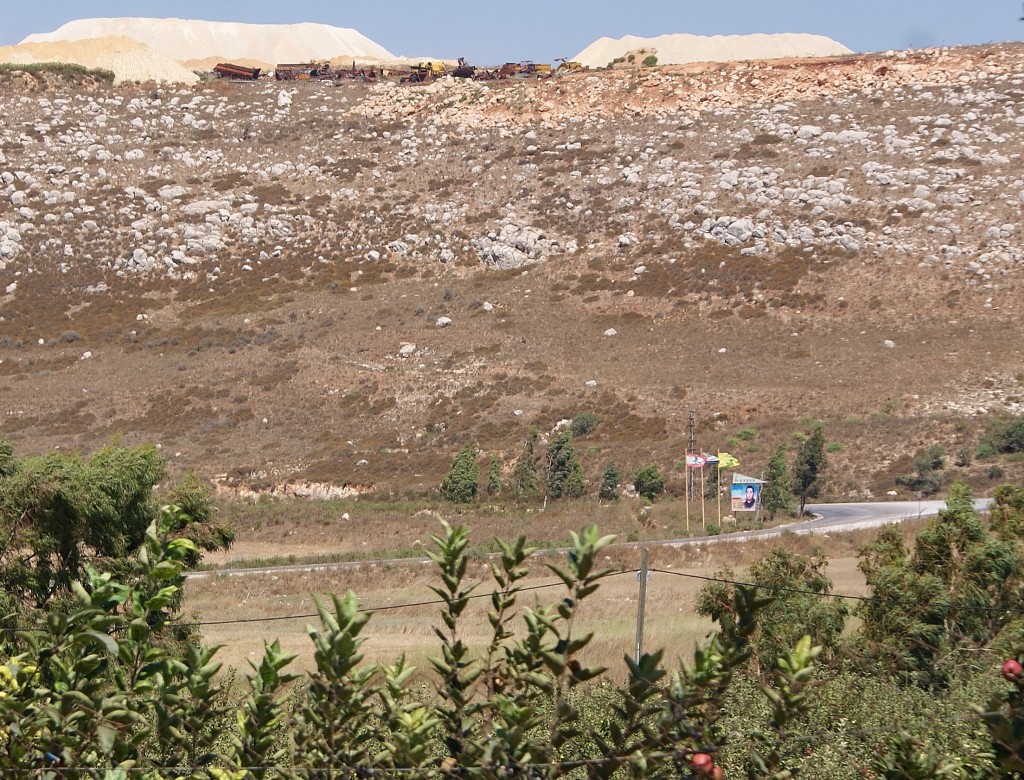
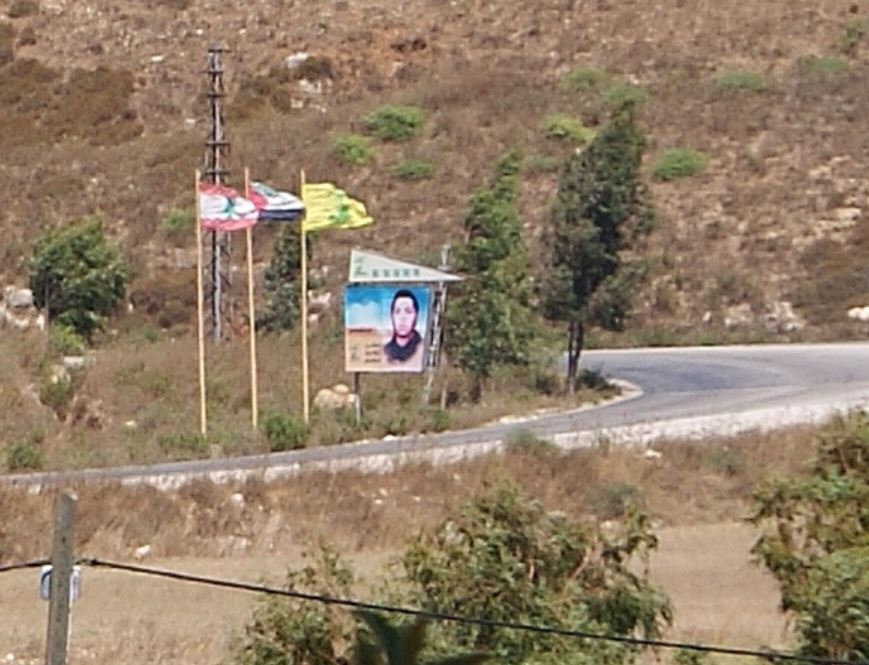
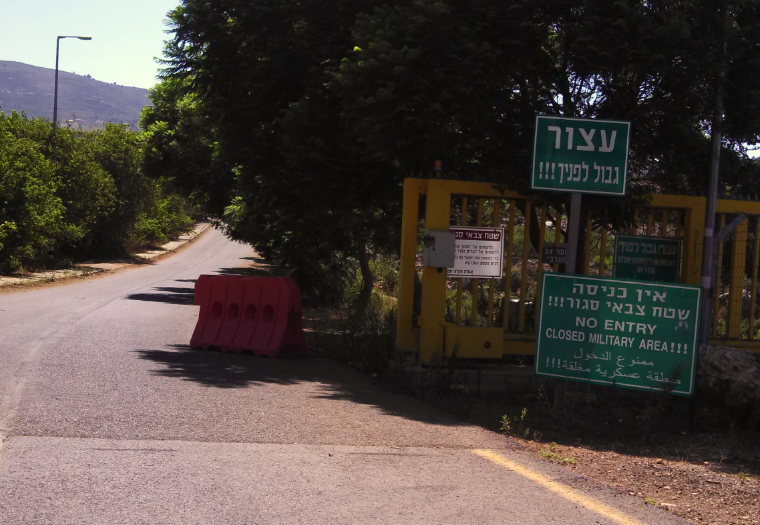

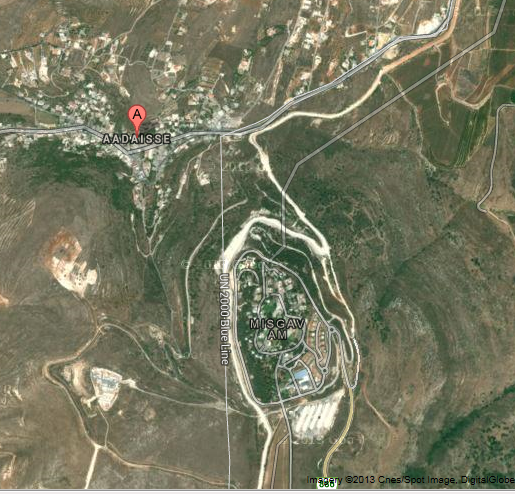
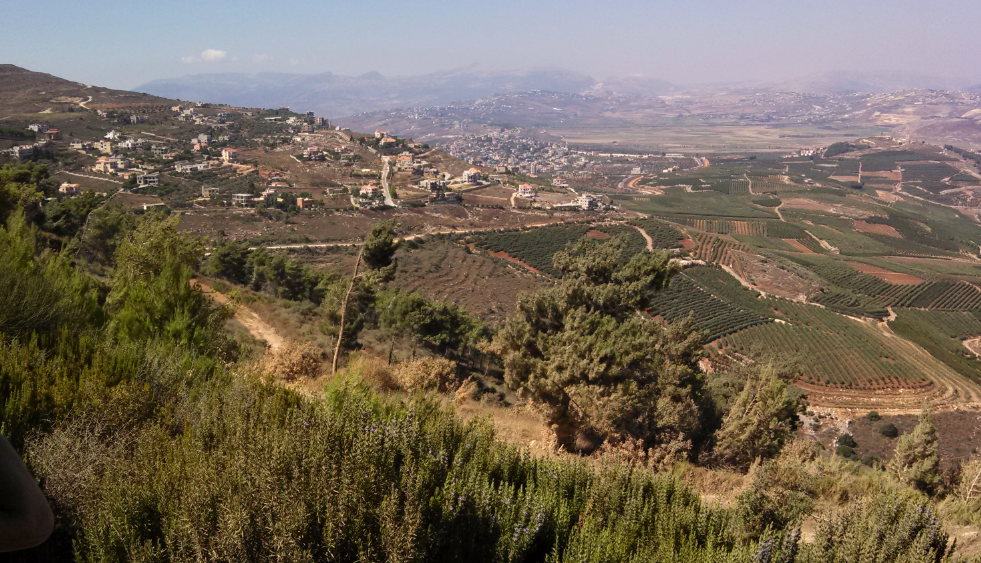
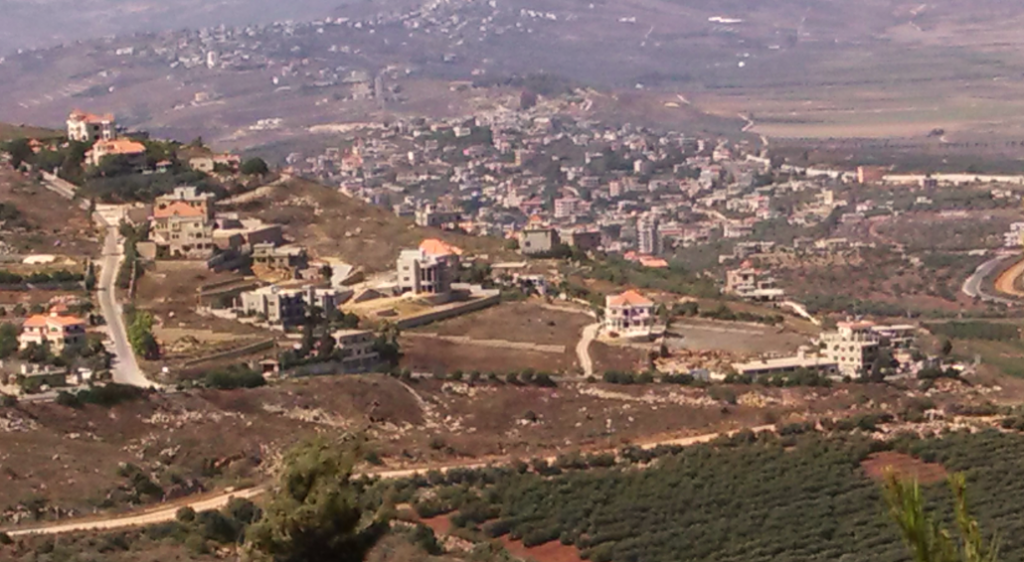
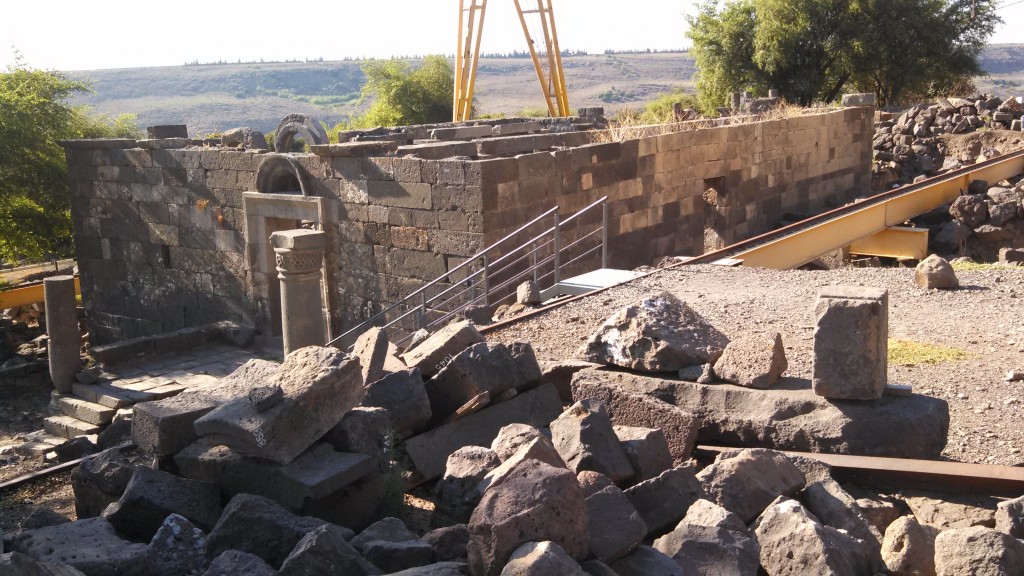







Comments
There is no end. Because it continues to exist in the hearts of men.
No one can make accurate predictions. But I think Lebanon gets the brunt of the hezbollah activities, ahead. Because? Because among arabs they will fight for power. (Just as drug addled youth fight for territory divided by blocks.)
What Matula represents is “We’re Not Afraid of You.”
Now, of course, Bibi has set off with some sort of “talks.” If we’re lucky, they’re lawyerly. And, won’t upset the very people you’ve just visited.
From my distance here I worry a lot! Mostly, because I have very odd feelings about Olmert. He was just a pawn used by Arik Sharon to block Shimon Peres from Seat #2.
I think Israel’s had 12 prime ministers. And, Katzav’s “seat” was ripped out from under him, so Shimon Peres can grow old sitting at the head of a ceremonial table.)
Livni doesn’t frighten me that much.
But it was sure interesting how Kerry snapped an arab facade on top of Bibi’s desire to hold nine months worth of talks.
I can’t imagine you didn’t pick up every single English language daily newspaper available for purchase in Israel.
I know enough about Israelis to know when they talk about politics, they’re not docile. So, what did you hear? And, are you hopeful?
” I know enough about Israelis to know when they talk about politics, they’re not docile. ”
So have a look at the cartoon from Israel Hayom of the 30.07.2013
http://www.israelhayom.com/site/newsletter_car.php?id=797
to see what Israel’s most read paper, now, has to say about Tzipi Livni and Kerry’s “Peace Talks” extravaganza.
Beautiful pictures, Wm. I’m glad you took those pic of the fake village because they are a testimony to Hezbollah duplicity and can set the record straight in the event of new hostilities. I sure hope you have the larger images which show the lack of windows more clearly. These folks are always thinking of killing Israelis and lying about Israeli actions. Proactive liars.
Thanks for documenting your trip for us. I’ve enjoyed seeing the pictures of places in the area I hear about but have never seen. Thanks, again.
Jealous. Would love to take a trip like yours.
What fantastic photos! The serenity of the surrounding landscape is what always strikes me when we visit the north. It’s so hard to picture it as eh scene of furious battles.
That yellow gate in the fifth photo – we drove through it once by accident. We met some soldiers further down the road who stopped us and told us we were now “abroad”. We were quite shocked and told them that someone had left the back door to the country open. 🙂
Metullah, Kfar Giladi and Kiryat Shmonah were regular haunts of ours since our daughter lived in Kiryat Shmona for 6 years.
Happy memories. But some scary ones too, particularly from 2006.
First, thanks for the excellent blog, Professor, and thanks especially for your travelogue. I have become a regular reader and fan.
Regarding the “fake village”/ “Hezbollah firing positions” at Aadaisse, Lebanon:
No doubt Hezbollah would readily adopt the pose that Israelis blew the windows out of the houses in Aadaisse, if they could – Hezbollah will use whatever argument is expedient. And no doubt they will use these structures as firing positions if the opportunity arises. Still, I would guess that the explanation for the unfinished construction is more mundane. One sees single and multi-family houses and small apartment buildings in that same condition of incompleteness in Israel itself, along the roads leading into and out of the Golan Heights, in many different areas. I was puzzled upon first noticing it, but I eventually surmised that, in addition to the usual explanations for unfinished construction (running out of money; things just not happening as planned, etc. ), this may be a way of spreading out construction costs to match the work done to the funds available. The basic structures may be completed only to the extent of roughing in (plumbing, wiring, etc.), leaving the selection and installation of finishes, fixtures, windows, wall and floor coverings, and the like (major expenses that can be undertaken piecemeal, if desired) to the tastes and the budget of the owner/occupant.
Perhaps some of the Israeli readers and commenters can help?
In any case, unfinished buildings are not uncommon throughout the Middle East – or many other parts of the world, for that matter.